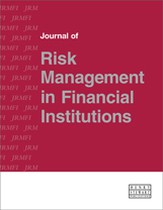Comments on Risk Accounting
Abstract
The paper ‘Risk Accounting — The risk data aggregation and risk reporting (BCBS 239) foundation of enterprise risk management (ERM) and risk governance’ was published in two separate editions of the Journal of Risk Management in Financial Institutions (JRMFI), Part 1 in the spring and Part 2 in the summer of 2016. In view of the significant interest shown by academics and practitioners during the peer review process, the Journal’s editors subsequently invited risk experts to comment on the published paper. In particular, these thought leaders were asked to comment on whether, in their opinion, the novel concept of a risk metric termed a ‘Risk Unit’ or ‘RU’ represents an appropriately risk-sensitive measure that can be used to both express and aggregate all forms of risk. This latter point, meeting this risk data aggregation requirement, is essential in accommodating BCBS 239’s risk data aggregation principles1 and ultimately in providing more effective systems of enterprise-wide risk management (ERM). In their paper, Allan Grody and Peter Hughes explain why financial institution executives, risk managers and accountants, in particular, should view the need for the convergence of finance and risk systems within a common control and reporting framework as an imperative. They document by example how Risk Accounting is designed as an ERM system to provide both a risk management and a risk control framework from which more effective programmes of risk governance and positive risk cultures can evolve. The authors describe how this might be achieved through a measurement technique termed ‘Risk Accounting’ that introduces a common risk measurement framework for all forms of risk using the RU as the valuation metric. They argue that only through the adoption of such a framework can compliance with BCBS 239 be achieved. The authors further describe how the risk quantification technique that underpins Risk Accounting represents a novel solution to the long-standing and still unresolved issue of how to explicitly and dynamically quantify exposures to operational risk. It is the hope of JRMFI’s editors that the expert contributors’ comments reproduced below will further stimulate the debate on what future directions the industry should consider in the realisation of next-generation integrated finance and risk management methods and systems.
The full article is available to subscribers to the journal.
Citation
(2016, October 1). Comments on Risk Accounting. In the Journal of Risk Management in Financial Institutions, Volume 9, Issue 4. https://doi.org/10.69554/CSWG1354.Publications LLP
